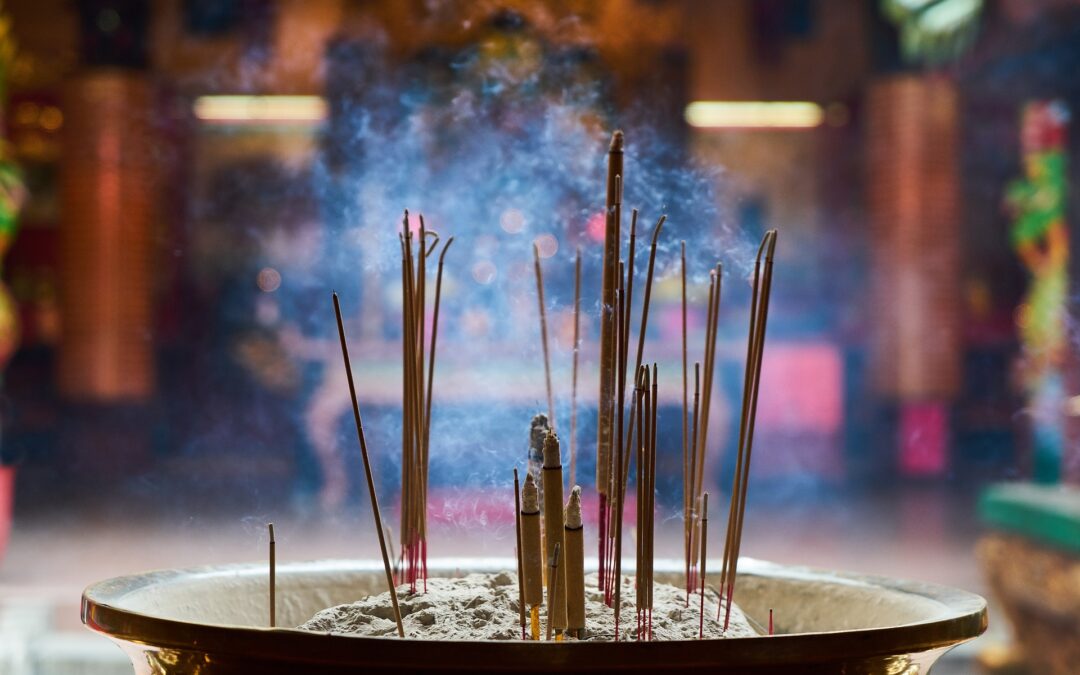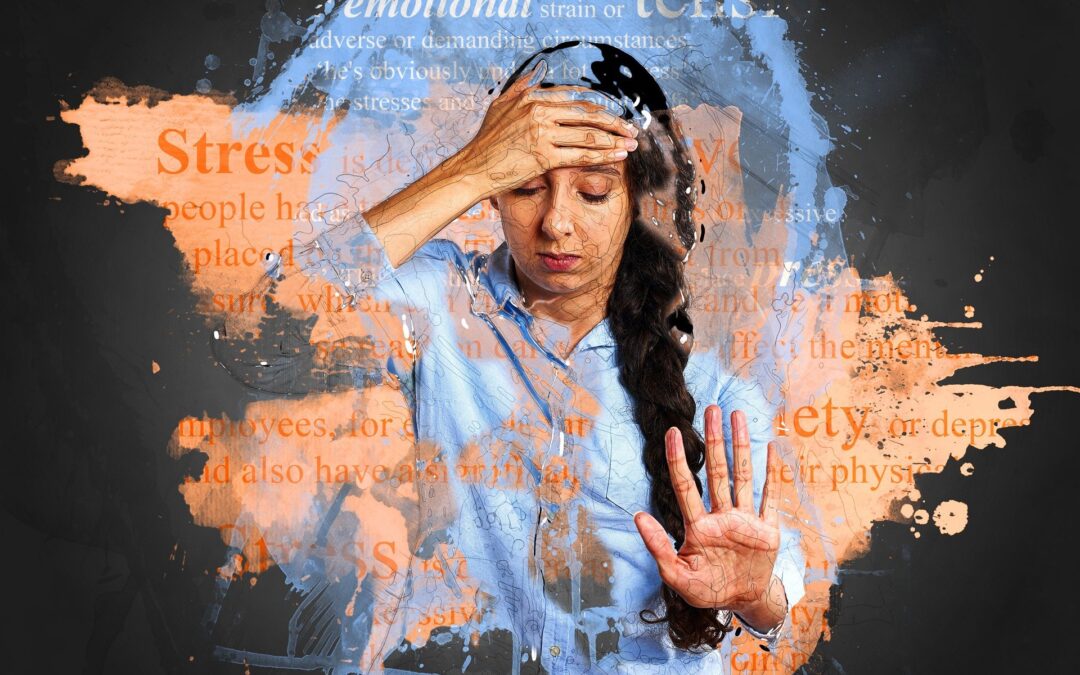
INCENSE 101
In the most basic definition, incense is the burning of any aromatic plant material used to enhance, promote, protect life or to encourage and strengthen connection to the Divine. Burning aromatic plants for health, happiness and holiness has been a tradition in every culture throughout time. Smelling aromatic smoke can activate many different aspects of our inner life – the reaction to aroma can be primitive to sublime; archaic to evolved; inward or outward directed.
Ritual use of incense can be found within many cultures. Ancient Egyptians believed that their prayers were lifted towards the gods on the aromatic smoke. Make the smoke smell beautiful and your prayers were guaranteed to be answered. Olibanum was burned in the morning. Myrrh was burned at noon. And Kyphi, a blended incense, was used in the evening. In Japan, an incense burning culture of sophisticated esthetics was developed. Sensory delight stimulating the imagination led to the creation of Koh-do. In Koh-do there is a fragrance ceremony in which selected individuals seek to intensify both their awareness and inspiration through the use of aromatic smoke. Native American traditions view the burning of aromatic “power plants” such as sage, cedarwood and juniper, as a means of purification and healing, and also help restore people’s contact with nature as a whole and with the Great Spirit specifically.
As Thomas Kinkele states in his book, Incense and Incense Rituals,
“Fire is the elemental force of change. In the world of nature, it destroys what is old and creates fertile ground for rebirth. Human encounter with fire is also confrontation with human fear. Overcoming fear is a major issue in the face of this regenerative power. For primeval humans mastering this force gave them both warmth and protection from wild animals … To perceive the purification that occurs in the presence of fire and to find a sense of peace deep within is to experience a rebirth. Courage and capacity are ignited within when a human being encounters his very own fire.” (p.9)
There are several types of incense. Some of these include:
- Incense sticks: There are two types – those with supporting wood (eg. thin bamboo) or those without supporting wood
Supporting wood sticks have a moist aromatic paste applied to a thin bamboo stick then allowed to dry before use. Without supporting wood sticks are made in a similar way to making noodles. An aromatic paste is squeezed out and left to dry before use.
- Incense spirals: created without wood sticks, the aromatic paste is coiled and left to dry. Large coils have the advantage of burning for a long time. They can be burned using a specialty stand or delicately hung up with fine thread
- Incense cones: the most widespread and common form of incense. Aromatic paste is shaped into cones, left to dry, then ignited at their tip and allowed to burn down to the base
- Smudge Sticks: plants known as “power plants” are burned for their aromatic smoke. Cutting of the herbs, bushes or twigs is performed “in the Right Way” ie. with mindfulness and respect. Then, they are bundled and left to dry. When ready, the tip is lit and once really burning, the sacred smoke is inhaled while it envelopes the body – cleansing it and its energy of negativity. Sometimes, the plants are braided instead of bundled, as in the case of Sweetgrass.
- Smudge Smoke: Dried “power plants” are placed loosely in a container (eg.abalone shell) and then lit to create sacred smoke. The container may be left stationary or held and moved around the space or person, depending upon the situation, to cleanse and protect.
There are several ways to enjoy burning incense. The classic way is to scatter it on a glowing piece of charcoal in a crucible (an Incense Burner) or fire-proof dish. Most folks no longer use charcoal for their heating needs or barbeques, so one must look elsewhere for the charcoal. There are specially made charcoal quick-lite tablets designed for incense burning which are usually available where you purchase incense. If you have a real wood fire burning (not your inside gas fireplace!), you can easily sprinkle incense or dried aromatic plants onto it and let the aromatic smoke surround you.
If you have incense sticks, you can place them in a container filled with dirt or sand to use and enjoy the aroma anywhere. It is a “trick” that I use on the back deck when flowers are not plentiful. A few well-placed incense sticks tucked into my patio containers provide aroma that wafts around the area, creating a magical moment while sitting outside. Another method to consider is creating a large incense burn at the entrance of your home which greets guests as they arrive. Not only do they love being greeted by it, but as they walk through the smoke, the incense helps cleanse them of any negativity they might bring into your personal space!
When deciding upon which incense is necessary for personal growth and transformation, it is helpful to look at how the aroma can be categorized. The Four Elements: Fire, Air, Water, Earth all have corresponding incenses associated with them. Additionally, we can look at how the Three Centers of Perception: Mind, Emotion, Body, respond and work with certain aromas. To illustrate, let us look at examples of each with the Fragrance Message the aromatic incense conveys. These notes come from the book, Incense and Incense Rituals by Thomas Kinkele.
FIRE
Mind: Amber “Renewal at the place of origin”
Emotion: Cardamom “Confidence and joy in life”
Body: Cinnamon Bark “Food for the inner fire”
AIR
Mind: Pine Resin “Staying in the game”
Emotion: Rue “The seeker is guided to the light”
Body: Yerba Santa “Feeling love for yourself”
WATER
Mind: Lavender “Shedding light on the emotions”
Emotion: Rose “Comfort and healing”
Body: White Sage “Looking at what is essential”
EARTH
Mind: Asafoetida “At the center of the cyclone”
Emotion: Angelica Root “Walking your own path”
Body: Vetiver “Accepting and loving yourself”
You’ve likely noticed that several essential oils are listed for more than one use. That is their nature – oils don’t limit themselves to just “one-way only”. Some of these essential oils are also helpful with the physical pains and changes felt during stressful times. This makes them valuable for helping both the psychological and physical manifestations of stress and anxiety. Some folks combine an inhalation and application method with their selected essential oils so that they address their distress from all angles. Everyone’s aromatic journey is different, yet the goal is the same – Relief.
With these challenging times, it’s good to know that Mother Nature offers us support. Always has ~ Always will. We just need to partner with her to find what works for us.
Benzoin:
Cedar Wood:
Clove Bud:
Dragon Blood:
Elemi:
Eucalyptus:
Fennel Seed:
Frankincense:
Himalayan Sage:
Inula:
Mugwort:
Myrrh:
Oakmoss:
Patchouli:
Sage (Common):
Sandalwood:
Spruce Resin:
Tulsi (Holy Basil)
Water/Emotion “Allow yourself to let go and surrender”
Earth/Emotion “Protection and power are here”
Fire/Body “Approaching something new with momentum”
Fire/Body “Strength and courage”
Fire/Mind “Setting off for new horizons”
Fire/Body “Stepping from swatches of fog into clarity”
Water/Emotion “Comfort and relaxation”
Fire/Body “Letting the truth in”
Air/Mind “Opening up and risking the step”
Water/Mind” “Light from the root”
Air/Body “Concentrating on what is authentic”
Earth/Emotion “Fertility and purity”
Earth/Body “Everything is one”
Earth/Body “Basic trust and a strong presence”
Air/Body “Health, strength and long life”
Earth/Emotion “The supportive foundation”
Air/Body “Passing on the light”
Air/Mind “Loving receptiveness”
These are but a few of the aromatics that may be used as incense. May you enjoy exploring the many incenses available for enjoyment, healing and enlightenment


Recent Comments